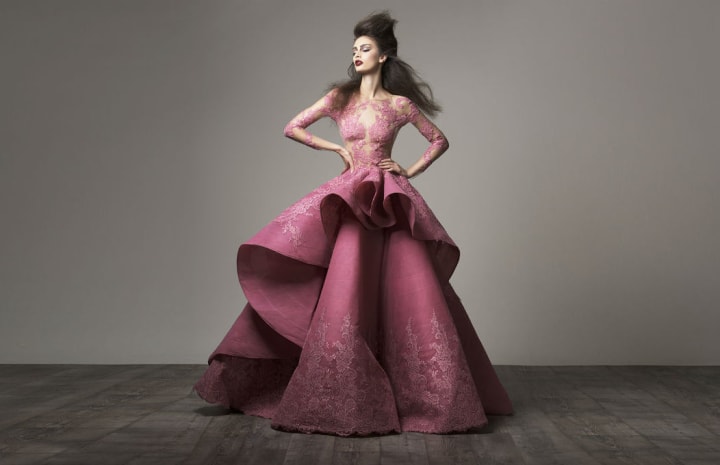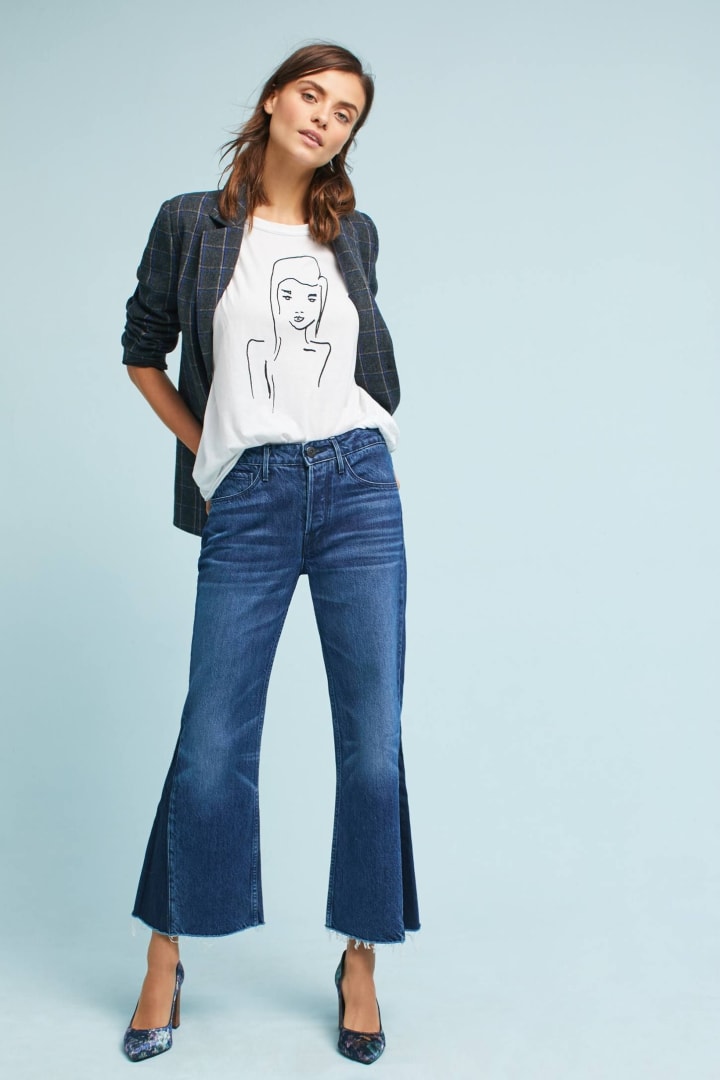Important Fashion Terms Everyone Should Know
Whether it's fashion week or a weekend shopping trip, you want to be in the know about the current important fashion terms being used in the industry.

Being a fashionista isn't about clothing—it's about culture, creativity, and occasionally making a statement. And as with any culture—especially a creative one—the fashion industry is constantly changing and growing, keeping the best ideas of the past and introducing the brightest ideas of the future.
A huge part of keeping up with a thriving industry is knowing the jargon— being able to talk about and understand the concepts, terms, and references used in the world of fashion. So, if you're a style addict, these are some of the most important fashion terms to know.
E-tailer

Photo by Brooke Lark on Unsplash
The fashion industry is growing and adapting to the modern age, just like the rest of the world. And as the success of online retailers like Amazon have shown us, one result of the technology age is that having physical stores isn't a criteria for success. So while many people do still prefer to shop in physical department stores or boutiques—often just to try on the clothes immediately—online commerce is still steadily growing in the fashion industry just as much as anywhere else.
But an E-tailer is not just any site that sells clothes—that would be just about every store or brand now. An E-tailer is a clothing retailer that exists entirely online, with no physical store. This recent trend is quickly changing the world of fashion, as it allows many more people to become fashion designers, putting their style out there for purchase without the costs of running a physical store.
Ombré is one of the important fashion terms that will be found throughout the fashion industry, though it's probably most commonly recognized with regards to hair coloring. The word itself is French, meaning literally "shaded", but in fashion designing terms, it refers to one hue that blends gradually into another. This can be any two colors or shades, whether it's a gradual change from light to dark or a gradual change from one color to a completely different one—like a sunset.
Although the term 'ombré' has recently gained new recognizability with the popularity of ombré hair, the fashion actually began in the 19th century. However, its use has certainly changed with the development of new methods of creating clothing, as well as the introduction of hair and makeup trends that reflect the same principle.
Haute Couture

I'll be honest, 'Haute couture' was one of those terms that I heard so regularly—especially during fashion week—that I eventually got too embarrassed to even ask what it meant. But that's probably because I don't speak French, as this is another term that comes from that particularly fashion-forward country. It means literally 'high-dressmaking', and its use in fashion jargon is essentially the same: It's used to refer to the most high-end fashion and clothing created by the largest fashion houses and often introduced and displayed at high-profile fashion shows and events in the fashion capitals of the world.
It also has connotations of being of the highest quality, and usually being handmade by the finest craftsmen. Haute couture is likely one of the most pervasive terms in the history of fashion and has become a designation for the best in current fashion. So if you're figuring out how to stay fashionable without breaking the bank, stay away from anything labeled Haute couture, it likely has a huge price tag attached.
A popular method of creating some pop and excitement in a piece, appliqué is the practice of using pieces of fabric overlaying the base fabric to create patterns and contrast. This can be anything from delicate, intricate patterning to big, bold splashes of color. Originally, it was done by sewing the smaller fabric onto the other but is now also popularly achieved with iron-on patches. The term was also originally meant to refer to fabric patterns alone but has developed a new use in more recent years, such that designs or patterns made of metal may also be considered appliqué when sewn onto fabric for the same effect. Either way, designers and hobbyists alike achieve this effect by creating their own patterns to attach, or applying ready to wear ones, which you can buy online or in stores.
Gusset

A gusset is a crucial element of much everyday wear, for both men and women. Though not a particularly glamorous thing, it's usefulness makes it invaluable to practical fashion, and thus being one of the important fashion terms to know.
A gusset is just a piece of strong fabric that acts as protection against holes and wear or works to stiffen or enlarge part of a garment or undergarment. It pervades the fashion industry, from the high fashion of big-name designers to your siblings' closet (a.k.a a great source of free clothes). The strengthened fabric at the collar and cuffs of most men's shirts, for example, is achieved with a gusset.
In agriculture, a yoke is a device that's used to spread the weight of heavy objects across animals such as oxen, so that they may carry them. But the word doesn't exclusively apply to farm animals and moving heavy objects. In fashion, it's kind of the same idea, just less... agricultural: The yoke is a part of the garment, usually around the shoulders or waist, that provides the support for the rest of the fabric. For example, in basic collared shirts, the yoke is the upper area under the collar, which fits the shoulders so that the rest of the shirt can hang down from there and remain secure. So, as with its agricultural use, the yoke distributes the weight of the shirt—or skirt—such that it stays on and stays even. So, while oxen probably don't have much place in the fashion industry, they did provide us with an important fashion term.
Dirndl Skirt

A fashion that's quickly coming back into style, the dirndl skirt is a skirt that fits tightly around the waist, but is full and wide at the bottom. This was a particularly popular fashion in the 50s and has retained all its classic charm in modern fashion and fashion shows, though the style has largely done away with the traditional addition of an apron section over the front of the skirt.
Another aspect of the dirndl skirt is that it generally falls between the knee and ankle, longer than the mini or midi-skirts many of us are used to, but stopping short of the maxi-length skirts that have also been gaining popularity in recent decades.
Ruching or rouching is a gathering or pleating of the fabric in a section of a garment to provide a ripple or wave-like effect. It has particular popularity in the nightlife fashion of miniskirts, but can be found in every kind of fashion piece, from hats to swimsuits. The term can be used as a noun, to refer to the section of the fabric itself, or as a verb. In verb form, it may refer to the method of knitting a ruche or ruched section or the method of creating the same look through sewing or pleating.
Besides being a popular look and fashion trend, ruching is popularly used in maternity clothing to provide some extra stretch and use the textured look to mask swelling and unevenness—a function that surely contributed to its popularity in fashion in general, as that masking effect is appealing to many women.
Eyelet

Photo by Emily Valletta on Unsplash
While eyelet can mean a few different things, they're all things any fashionista should know about—so it's one of the important fashion terms regardless. It's actual definition is just about what you would expect from the sound of it: a small round hole for decoration or to loop a rope or thread through. When used solely for decoration, an eyelet usually appears in a pattern of eyelets, creating a visually complex but appealing design. For the latter definition, however, the eyelets are generally rimmed holes through which thread, ribbon, or lace is strung.
While a garment that is riddled with eyelets makes for a striking, old-fashioned look, they are also commonly used just along the collars of shirts or hems of skirts to add a little bit of flair to a piece.
Filigree is a word that's about as old as it sounds. It has in fact been one of the important fashion terms for men and women of all kinds since ancient times. You'll find plenty of examples of filigree in museums, as well as on runways and at department stores.
Filigree is an art form and method of jewelry-making that involves using tiny beads or twisted threads, but instead of creating the lace-like look of fabric, they are made of fine metals—gold or silver, historically, but not necessarily. Due to the intricate results of this method, it's no surprise that it has been considered fashionable since as early as 3,000 B.C.—placing this in the history of fashion as beginning around the same time that Stonehenge was being built.
Ear Climbers and Cuffs

You've certainly seen this style in recent years, whether in high fashion circles or at Claire's. Ear climbers and cuffs achieve the effect of having many piercings, without the need to have the holes. Instead, it wraps around the ear to provide extra ornamentation in the upward direction— not just dangling down. Ear cuffs generally hook around the outside of the ear, somewhere on the upper half. They may stand alone, or connect to a standard lobe earring by a dangling chain or other ornamentation.
Similarly, ear climbers add a little something extra to your accessorizing by (okay, obviously) climbing the ear—usually up from a piercing. It's essentially a very long earring, but instead of dangling towards your shoulders (and catching on everything), it curves around your earlobe. These definitely qualify as clip-on earrings that slay.
About the Creator
Nicola P. Young
Lover of Books, Saxophone, Blogs, and Dogs. Not necessarily in that order. Book blogger at heartofinkandpaper.com.






Comments
There are no comments for this story
Be the first to respond and start the conversation.